
Today 10 November is the anniversary of the battle of Varna fought in 1444.
In a fierce battle, the Ottomans led by Sultan Murad II defeated the crusader army led by John Hunyadi and Władysław III of Poland.
It was one of crucial battles that enabled future Ottoman conquests.🧵


In a fierce battle, the Ottomans led by Sultan Murad II defeated the crusader army led by John Hunyadi and Władysław III of Poland.
It was one of crucial battles that enabled future Ottoman conquests.🧵


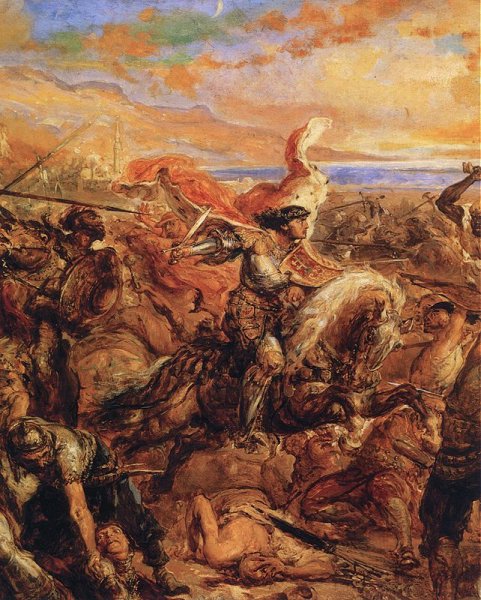
The Ottomans had already stopped a crusader army before at Nicopolis in 1396.
This defeat discouraged further crusades from Catholic West for the next decades.
Meanwhile the Ottoman Empire had its own problems with Timurids and internal wars.


This defeat discouraged further crusades from Catholic West for the next decades.
Meanwhile the Ottoman Empire had its own problems with Timurids and internal wars.
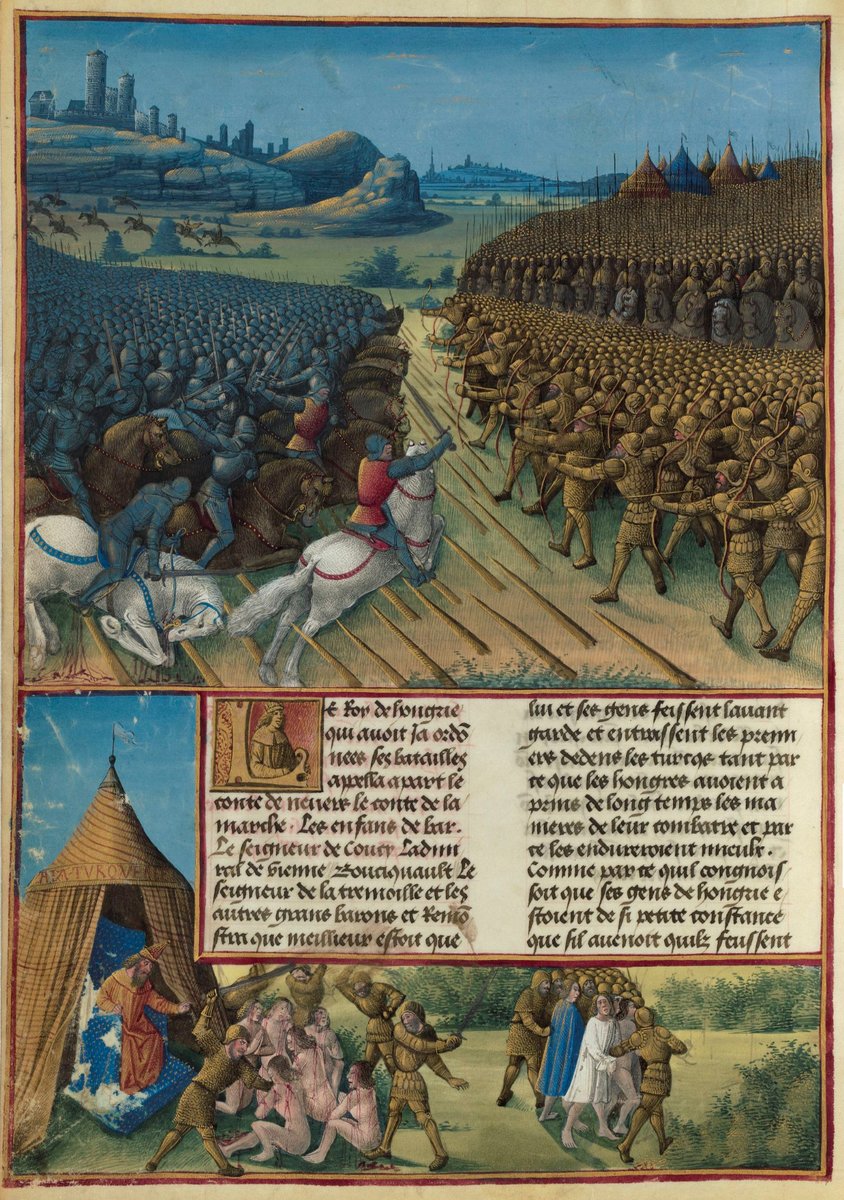


But Sultan Murad II who took power in 1421 gradually restored the power of the Ottoman Empire and started expanding in the Balkans.
In 1439 he invaded the Serbian Despotate and ultimately removed the buffer zone between Ottoman Empire and Kingdom of Hungary.

In 1439 he invaded the Serbian Despotate and ultimately removed the buffer zone between Ottoman Empire and Kingdom of Hungary.


The Kingdom of Hungary was the biggest obstacle the Ottomans were facing in Europe.
However this once mighty kingdom was severely weakened by internal problems following the death of King Sigismund in 1437 as he left no male heir to the throne.
However this once mighty kingdom was severely weakened by internal problems following the death of King Sigismund in 1437 as he left no male heir to the throne.

But this troubled time also witnessed the rise of a very capable warrior and commander, John Hunyadi.
He made his name defending the Transylvanian borderlands for Hungary and Christendom against the Ottomans.
He made his name defending the Transylvanian borderlands for Hungary and Christendom against the Ottomans.

Hunyadi was also loyal to the new King of Hungary, Władysław, and defeated the forces loyal to his rival to the throne, Ladislaus the Posthumous.
Władysław III of Jagiellon was the young 16-year old King of Poland who was offered the Hungarian crown by the Estates in 1440.
Władysław III of Jagiellon was the young 16-year old King of Poland who was offered the Hungarian crown by the Estates in 1440.

Meanwhile the rest of Europe was observing the situation in these obscure borderlands very closely.
The Ottoman advance worried many.
Pope Eugenius IV wanted a new crusade and sent his legate Cardinal Giuliano Cesarini to Hungary to gain support for this cause.

The Ottoman advance worried many.
Pope Eugenius IV wanted a new crusade and sent his legate Cardinal Giuliano Cesarini to Hungary to gain support for this cause.
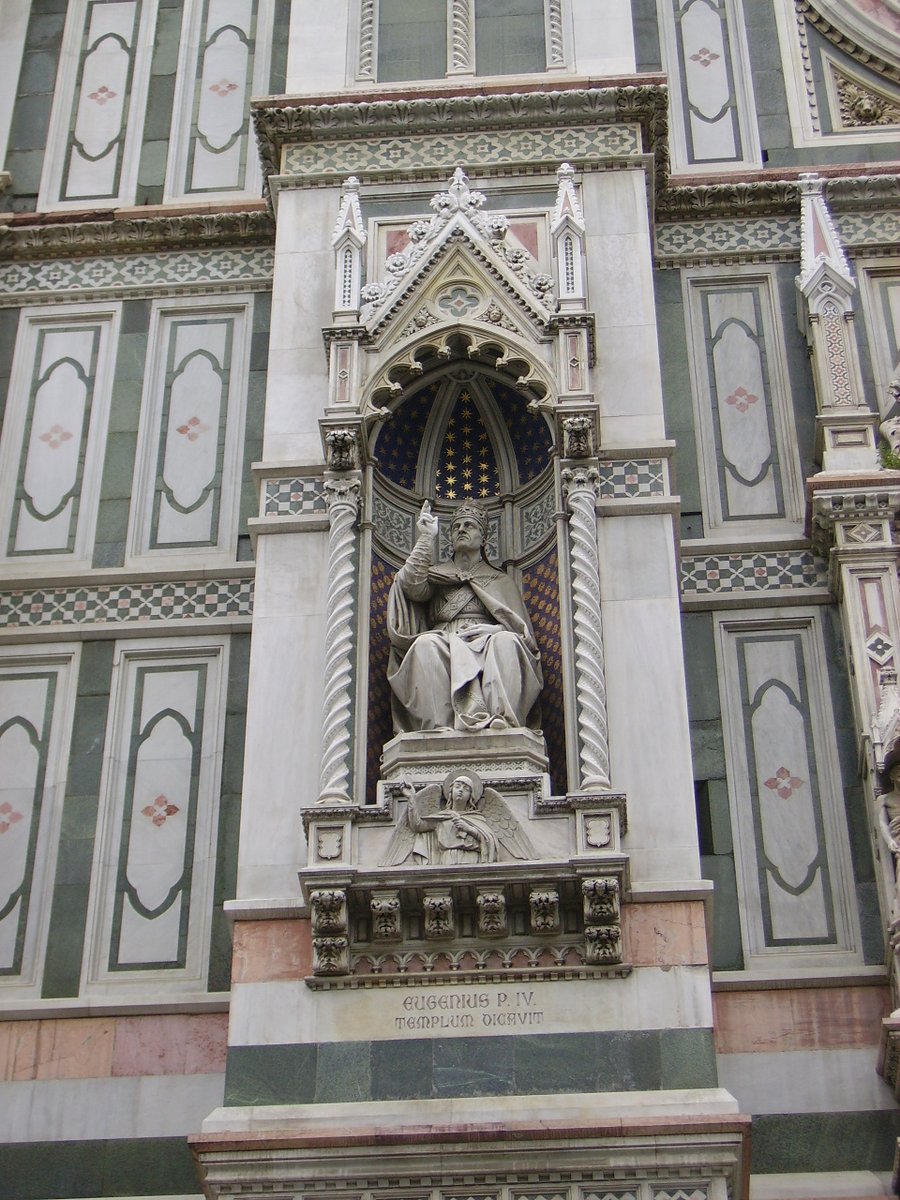

Pope felt that it was the right time to bring the war to the Ottomans who were troubled with problems in Anatolia. It was reported that "the Turks were in a bad state and that it would be easy to expel them from Europe"!
John Hunyadi was the perfect leader for this new crusade.
John Hunyadi was the perfect leader for this new crusade.

This led to Hunyadi's "Long campaign" of 1442-44.
The campaign was well funded and Hunyadi assembled a large army which was able to penetrate deep into Ottoman lands before Murad II was able to mobilize his large army to properly respond.
The campaign was well funded and Hunyadi assembled a large army which was able to penetrate deep into Ottoman lands before Murad II was able to mobilize his large army to properly respond.

Hunyadi won the battle of Nish in 1443 and headed straight for the important city of Edirne.
However the crusader army could not advance through the passes of the Balkan Mountains. They retreated back and won another battle against the pursuing Ottoman army at Kunovica in 1444.

However the crusader army could not advance through the passes of the Balkan Mountains. They retreated back and won another battle against the pursuing Ottoman army at Kunovica in 1444.

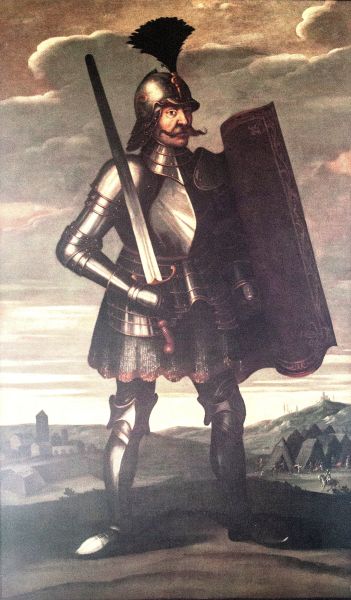
Despite the setbacks, the campaign was still perceived as a major success by the crusaders and was propagated as such. Hunyadi's crusade managed to win battles against Ottomans and advanced deep into enemy territory.
This sparked new enthusiasm for crusading.
This sparked new enthusiasm for crusading.

The battle of Nish also saw the famed Albanian commander Skanderbeg switch sides. Previously loyal to Sultan Murad II, he deserted the Ottomans and left for Albania where he united the nobility in the League of Lezhë and achieved a victory against Ottomans at Torvioll in 1444. 

In light of this, Sultan Murad II offered the crusaders a generous peace which was accepted by Hungarian ambassadors in August of 1444.
The Peace of Szeged agreed to a 10 year truce. Ottoman withdrew from Serbia and Albania, paid indemnity of 100k florins and released hostages.
The Peace of Szeged agreed to a 10 year truce. Ottoman withdrew from Serbia and Albania, paid indemnity of 100k florins and released hostages.
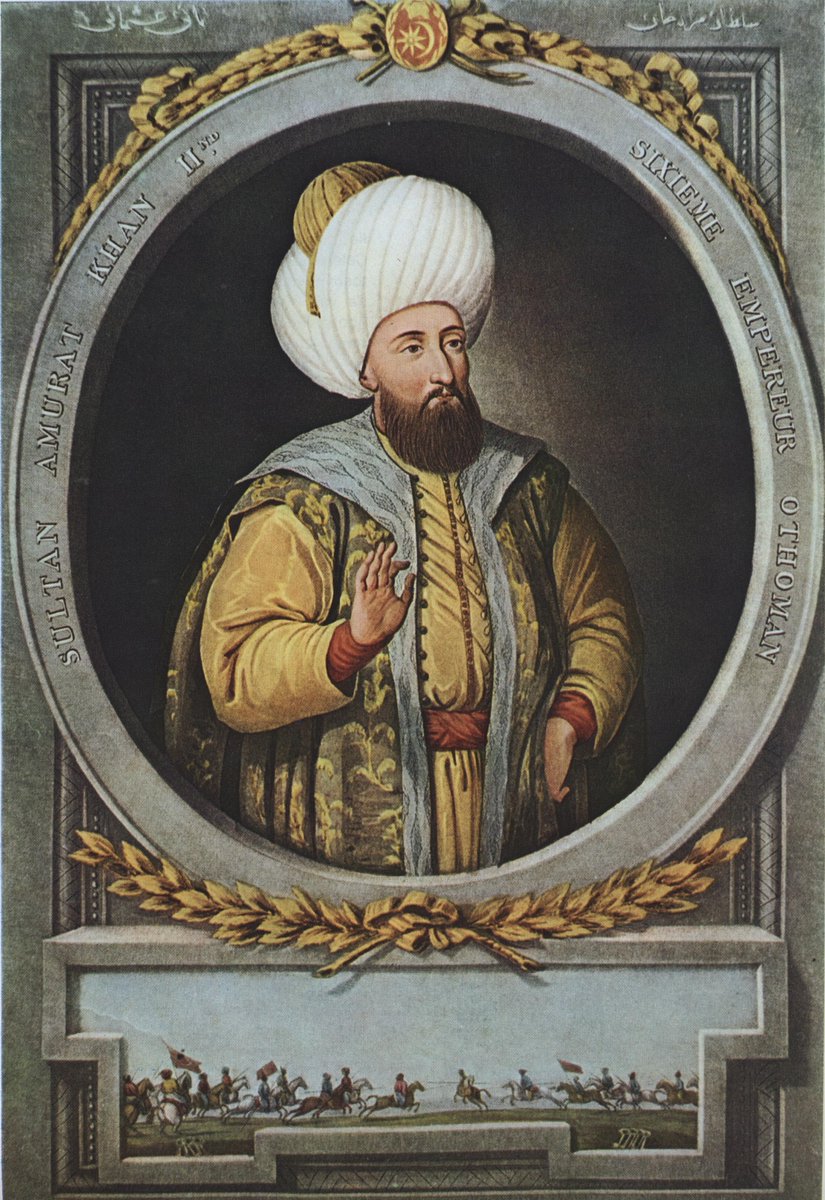
But not everyone from the Christian side wanted peace. While the negotiations took place, preparation for a new crusade pushed by Cesarini and King Władysław continued through the summer and into autumn.
The peace treaty would soon be broken by the crusaders!
The peace treaty would soon be broken by the crusaders!

Meanwhile Murad II also made peace with the Karaman Emirate in August 1444. Thinking he left his empire in peace, he abdicated as Sultan and was succeeded by his 12-year-old son Mehmed II.
But he soon heard news that a new crusade was organized against him by the Pope!
But he soon heard news that a new crusade was organized against him by the Pope!
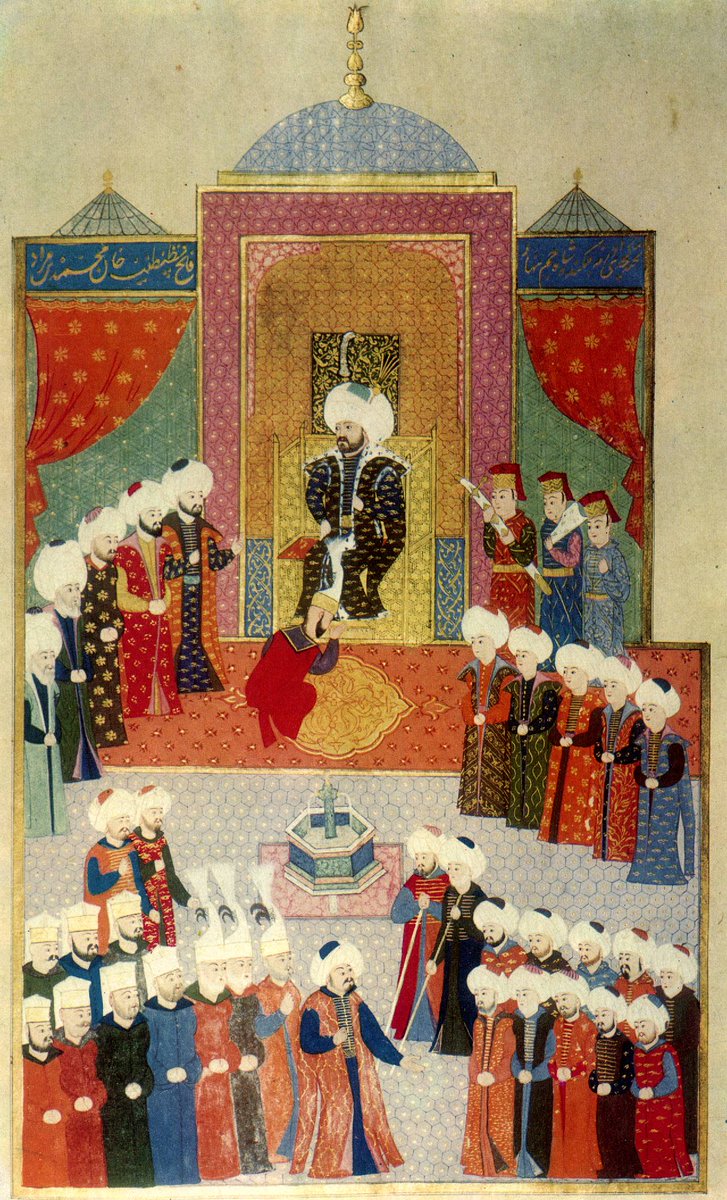
However this crusade was poorly planned.
It seems that the crusaders were overly enthusiastic because of the success of Hunyadi's "long march".
This put the crusaders into a false sense of security, further emboldened by a zealous papal legate and a young king seeking glory.
It seems that the crusaders were overly enthusiastic because of the success of Hunyadi's "long march".
This put the crusaders into a false sense of security, further emboldened by a zealous papal legate and a young king seeking glory.

The army that Hunyadi and King Władysław raised this time was actually less impressive than the one for the Long Campaign. Not that many Polish knights joined and not everyone from Hungarian nobility showed up either.
An army of around 16k left, joined by 4k Wallachians.
An army of around 16k left, joined by 4k Wallachians.

The crusaders counted primarily on two things.
1) The allied Christian fleet provided by Papal States, Venice, Ragusa and Burgundy blocking the Dardanelles so that Sultan Murad II would not be able to arrive from Asia.
2) Enthusiastic local Christian support for crusade.
1) The allied Christian fleet provided by Papal States, Venice, Ragusa and Burgundy blocking the Dardanelles so that Sultan Murad II would not be able to arrive from Asia.
2) Enthusiastic local Christian support for crusade.

But by doing this they already made a mistake by counting on things outside of their control.
It seems that their plan was to deliver a knockout blow by heading to Edirne as fast as possible.
However the campaign had logistical problems and faced setbacks.
It seems that their plan was to deliver a knockout blow by heading to Edirne as fast as possible.
However the campaign had logistical problems and faced setbacks.

The march of the crusader army was slower than expected and they were facing casualties.
Meanwhile the blockade of the allied Christian navy didn't hold either as they faced a large Ottoman army that could reach them with cannons from land crossing the Bosphorus.
Meanwhile the blockade of the allied Christian navy didn't hold either as they faced a large Ottoman army that could reach them with cannons from land crossing the Bosphorus.

Ultimately there was no enthusiastic local Christian support the crusade counted on.
The Byzantines were unwilling to help the Christian navy hold the blockade even though this crusade was their last hope, and the Genoese even helped transport the Ottoman army in their ships.
The Byzantines were unwilling to help the Christian navy hold the blockade even though this crusade was their last hope, and the Genoese even helped transport the Ottoman army in their ships.

The mighty Ottoman army crossed the Bosphorus and was now in Europe while the crusaders were still slowly plodding deep in the Balkans.
The Ottomans would corner them near the fortress of Varna, catching the crusaders between the Black Sea and Lake Varna!
The Ottomans would corner them near the fortress of Varna, catching the crusaders between the Black Sea and Lake Varna!

The crusaders now had no choice but to fight against the larger Ottoman army in the open and hope for a miracle.
Hunyadi arranged his army into a long line.
Behind this long line was the wagenburg, an improvised fortress of war wagons defended by Czech mercenaries.
Hunyadi arranged his army into a long line.
Behind this long line was the wagenburg, an improvised fortress of war wagons defended by Czech mercenaries.

Hunyadi did not opt for defensive tactics of hiding behind wagenburg as this way the Ottoman army could simply starve them out without giving them battle.
King Władysław wanted an aggressive approach as well.
But it would be the Ottomans who started with an ambush.
King Władysław wanted an aggressive approach as well.
But it would be the Ottomans who started with an ambush.
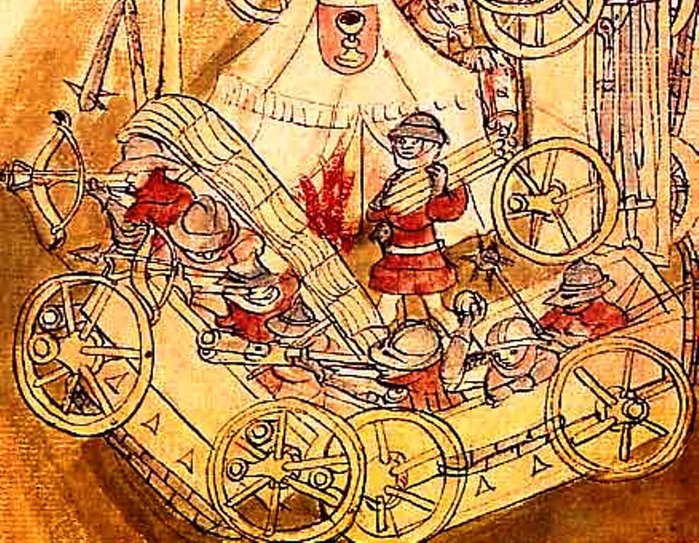
The Anatolian cavalry attacked the Hungarian right flank and took it by surprise. Most crusaders on this flank were massacred or routed, but a part of them successfully retreated behind the wagenburg.
Meanwhile the Ottomans attacked the Hungarian left flank as well.
Meanwhile the Ottomans attacked the Hungarian left flank as well.

But Hungarian left flank consisted of elite warriors who were veterans of Hunyadi's campaign led by his brother in law Michael Szilágyi.
They were able to hold firm against the attack of the Ottoman Rumelian cavalry.

They were able to hold firm against the attack of the Ottoman Rumelian cavalry.


Hunyadi decided to join the fighting on the left flank to help disperse the Rumelians.
Meanwhile both King Władysław and Sultan Murad II stayed in the center of their armies and were not yet involved in the fighting.
Meanwhile both King Władysław and Sultan Murad II stayed in the center of their armies and were not yet involved in the fighting.

Hunyadi's elite veteran troops were able to rout the Ottoman right wing consisting of Rumelians. Meanwhile the Anatolian left wing of the Ottoman army dispersed the crusader right wing.
Both armies lost one flank up to this point and the dramatic battle seemed evenly matched.
Both armies lost one flank up to this point and the dramatic battle seemed evenly matched.
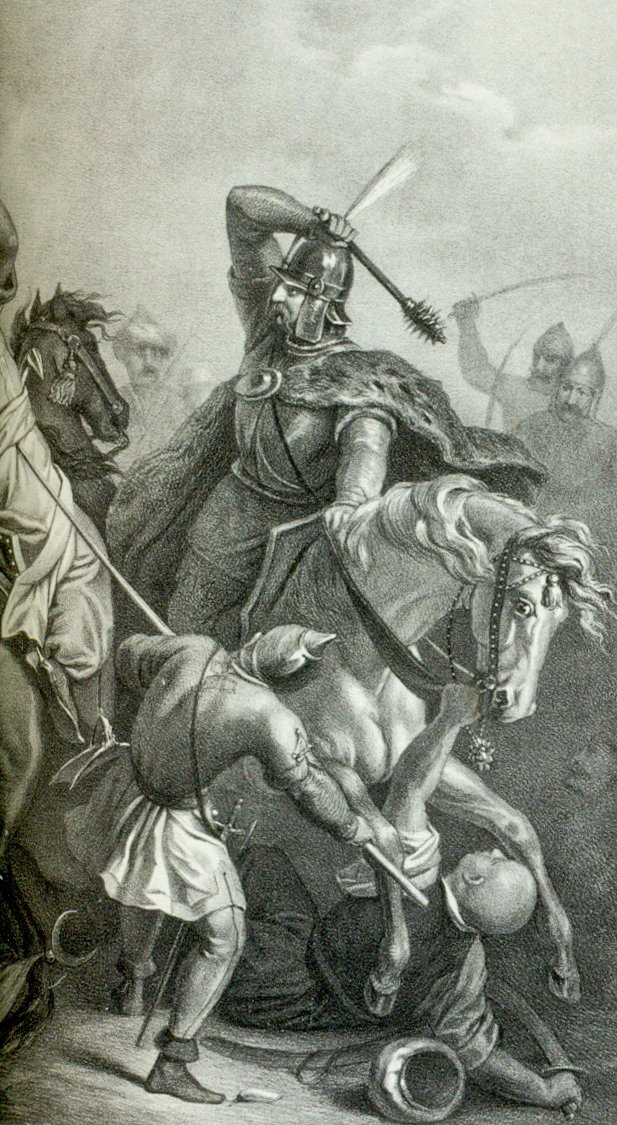
Hunyadi then directed his troops towards the Anatolians and managed to push them back as well.
The Anatolians were likely tired and demoralized having marched all the way from Anatolia, facing the determined crusaders who had no choice but to fight to the death.
The Anatolians were likely tired and demoralized having marched all the way from Anatolia, facing the determined crusaders who had no choice but to fight to the death.

But in this crucial moment of the battle, King Władysław decided to take things into his hands.
Despite being instructed by Hunyadi to wait until his return, the young king decided to launch a charge at Sultan's infantry in the center, seeking glory for himself!
Despite being instructed by Hunyadi to wait until his return, the young king decided to launch a charge at Sultan's infantry in the center, seeking glory for himself!
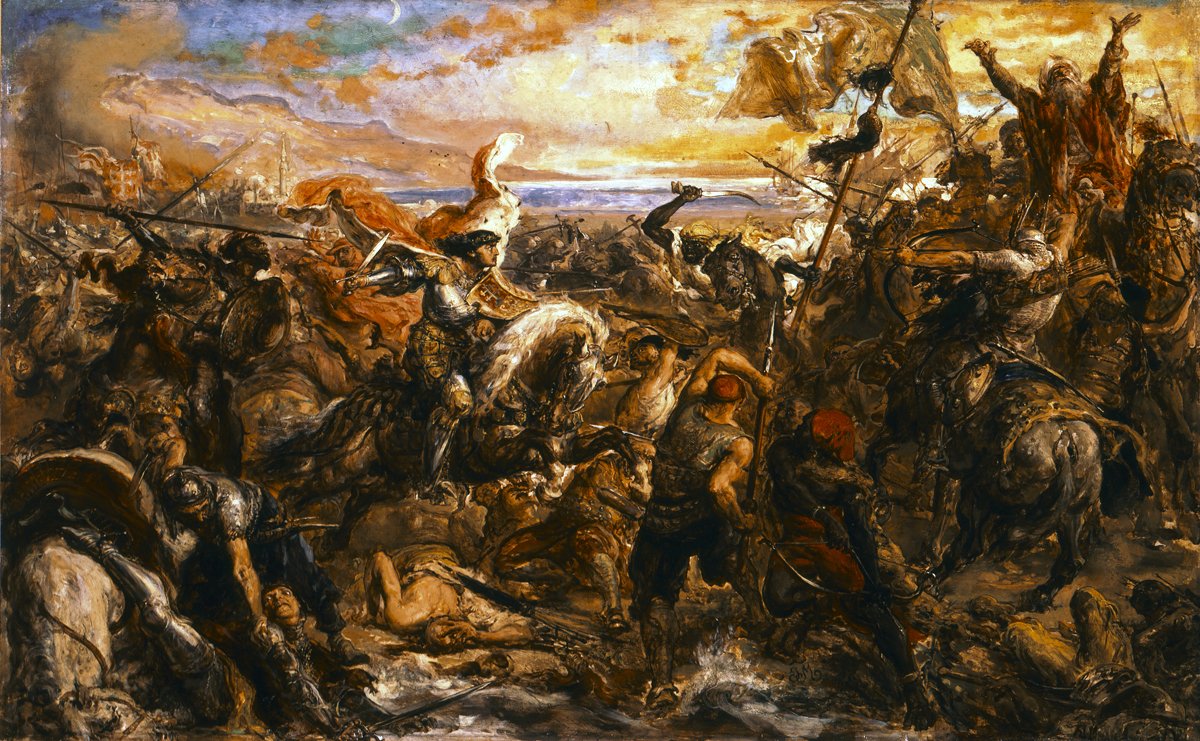
Perhaps he was egged on by his elite Polish bodyguards or maybe the young King Władysław felt he was in shadow of John Hunyadi.
Whatever his reasons, this was a foolish move as he charged with his small retinue into elite janissaries of the Sultan.
Whatever his reasons, this was a foolish move as he charged with his small retinue into elite janissaries of the Sultan.
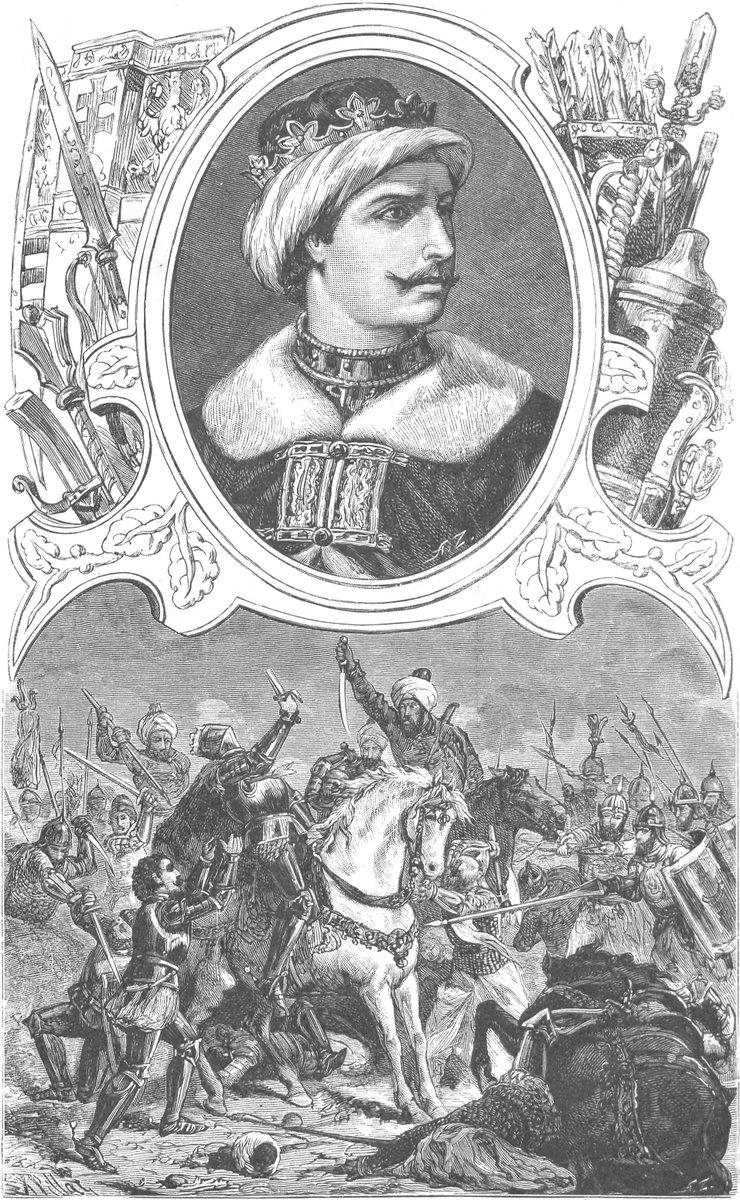
According to some accounts the young king's charge almost manage to slay the Sultan. But his horse was ultimately killed beneath him and he was beheaded.
This demoralized the rest of crusader army and Hunyadi redirected his attack to try to salvage the king's body.
This demoralized the rest of crusader army and Hunyadi redirected his attack to try to salvage the king's body.

Sultan Murad II knew the high stakes of this battle, that's why he had joined the fighting with his elite janissary troops and personally directed them.
Before the crusade of Varna he had already abdicated but his son recalled him precisely because of his experience in war.
Before the crusade of Varna he had already abdicated but his son recalled him precisely because of his experience in war.

With what remained of crusader army falling apart, Hunyadi had no choice but to organize retreat with his cavalry.
Meanwhile the infantry that remained in the wagenburg had no choice but to surrender. They were either slaughtered or enslaved by the victorious Ottoman army.
Meanwhile the infantry that remained in the wagenburg had no choice but to surrender. They were either slaughtered or enslaved by the victorious Ottoman army.

Hunyadi escaped alive and was clearly frustrated with what he saw as a nearly won battle.
He would lead another crusader army 4 years later at the second battle of Kosovo where he would lose to Ottomans again.
These defeats ended any Christian hopes of saving Constantinople.
He would lead another crusader army 4 years later at the second battle of Kosovo where he would lose to Ottomans again.
These defeats ended any Christian hopes of saving Constantinople.

Hunyadi would still end his career on a high note, relieving the Siege of Belgrade in 1456 where he faced a large Ottoman army again.
He died of plague shortly afterwards at the height of his glory, famous all over Christendom due to his crusading efforts.
He died of plague shortly afterwards at the height of his glory, famous all over Christendom due to his crusading efforts.

Meanwhile the Ottomans captured the greatest prize of them all, Constantinople.
The victories over crusader armies at Varna and Kosovo discouraged further such efforts by Westerners and opened the way for Ottomans to finally conquer this magnificent city in 1453.
The victories over crusader armies at Varna and Kosovo discouraged further such efforts by Westerners and opened the way for Ottomans to finally conquer this magnificent city in 1453.

• • •
Missing some Tweet in this thread? You can try to
force a refresh


























